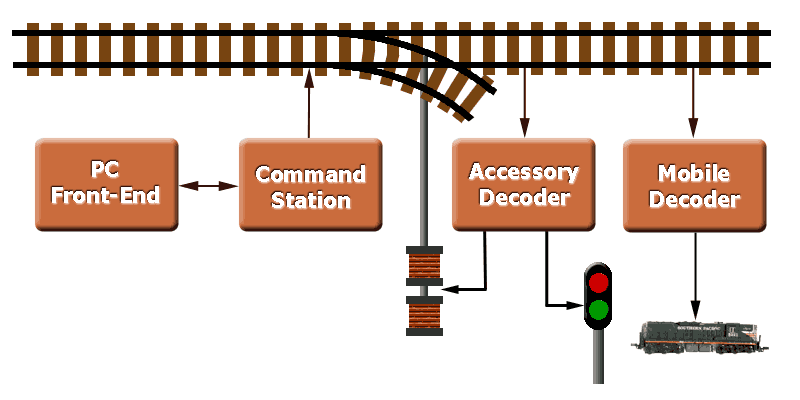The DCC Project
I have been interested in electronics, especially micro-controllers
for a while. The same goes for programming. I have dealt
with them professionally too though micros was many
moons ago. When I got into model trains, it was inevitable
that I try to put the three together.

Objectives
- Use a PC for the front-end
- Use a PIC based DCC command station
- The two communicate using the serial port. Use ASCII to allow testing
using a terminal.
- Put as much of the complexity on the PC as possible and keep the
command station simple
Components
To have a complete DCC layout, you need several
components. In order of increasing difficulty, they are
- Front End Software
To simplify the design of the command station and to present
the user with a user-friendly graphical interface, a front
end program has to be written.
- Command Station
A Command Station
together with a few mobile decoders are enough to start
a DCC layout. Mobile decoders are the most difficult
part. These are easily available and the cost
is hard to beat by building your own. The command station,
however, is an expensive component and makes sound economic
sense to build one.
- Accessory Decoder
This would be the next component. This would complete
the DCC system assuming ready-made DCC mobile decoders
are used. The logic used will come in handy if I ever
decided to build my own mobile decoders. Unlike mobiles,
there are no serious size constraints.
- Mobile Decoder
This would be the last component. In addition to the
higher level of complexity in decoding a DCC signal,
there are size constraints as well. This also involves
SMD and double sided custom PCBs. In addition,
commercial mobile decoders are getting cheaper. However,
this a challenging task. Some day...
You can check my progress
with the DCC Project.
DCC Links
Here are some DCC
related resources that may be of interest to a build-your-own-DCC
hobbyist.


Updated on 1 Nov 2000. Feedback to





